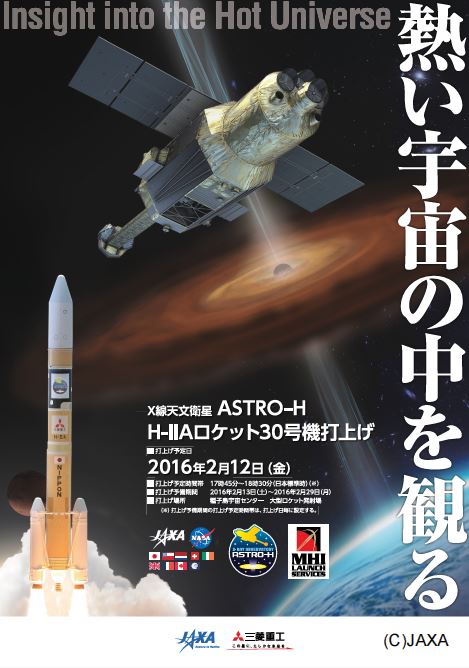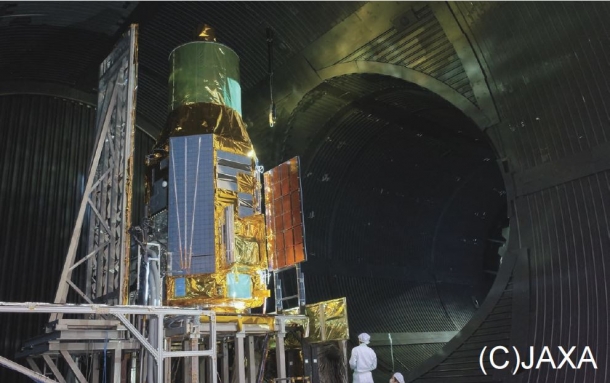On February 12, the X-ray astronomy satellite, ASTRO-H, will launch from the Tanegashima Space Center on board H-IIA rocket No. 30. Waseda Professor Jun Kataoka (School of Advanced Science and Engineering) is a member of the ASTRO-H team.

ASTRO-H
ASTRO-H is an astronomy satellite that will help us learn about the structure and evolution of the universe. The satellite will observe black holes, neutron stars, supernova remnants, galaxy clusters, and other high temperature, high-energy heavenly bodies that give off strong X-ray and gamma ray emissions. Space may appear quiet and serene, but X-ray and gamma ray observations reveal tens to hundreds of millions of super high-temperature phenomena, explosions, collisions, outbreak phenomena, and other fierce abnormalities occurring in the Milky Way and outside galaxies. Earth’s atmosphere absorbs X-rays and gamma rays, making it impossible for these rays to reach below the planet’s atmosphere. For this reason, observation from space is a necessity.
Expectations
Galaxy clusters, the largest heavenly bodies in space, grow through a series of collisions and mergers. ASTRO-H is capable of precisely capturing X-ray wavelengths emitted by high-temperature gases in galaxy clusters to an unprecedented degree. Satellite observations are expected to teach us about the formation and growth of galaxy clusters and the cosmos by examining the speed and strength of air turbulence and gas kinetic energy caused by the series of collisions and mergers that occur within galaxy clusters.
The high densities, strong magnetic fields, and intense gravities of black holes, neutron stars, white dwarfs, and other heavenly bodies cannot be recreated below Earth’s atmosphere. ASTRO-H can observe these extreme heavenly bodies down to their low-energy X-rays and soft gamma rays. Using the satellite, we can verify the location and acceleration of explosions, space-time distortion around black holes, high-energy particles, and other physical, dynamic phenomenon that occur in these bodies.

Over 250 researchers from JAXA, NASA, research organizations, and universities around the world are participating in the ASTRO-H flagship mission. Research teams are working with private sector engineers to develop equipment and conduct tests while preparing data analysis software to be used following the satellite’s launch. Waseda is proud to be a member of this coalition and is committed to the advancement of X-ray astronomy.








